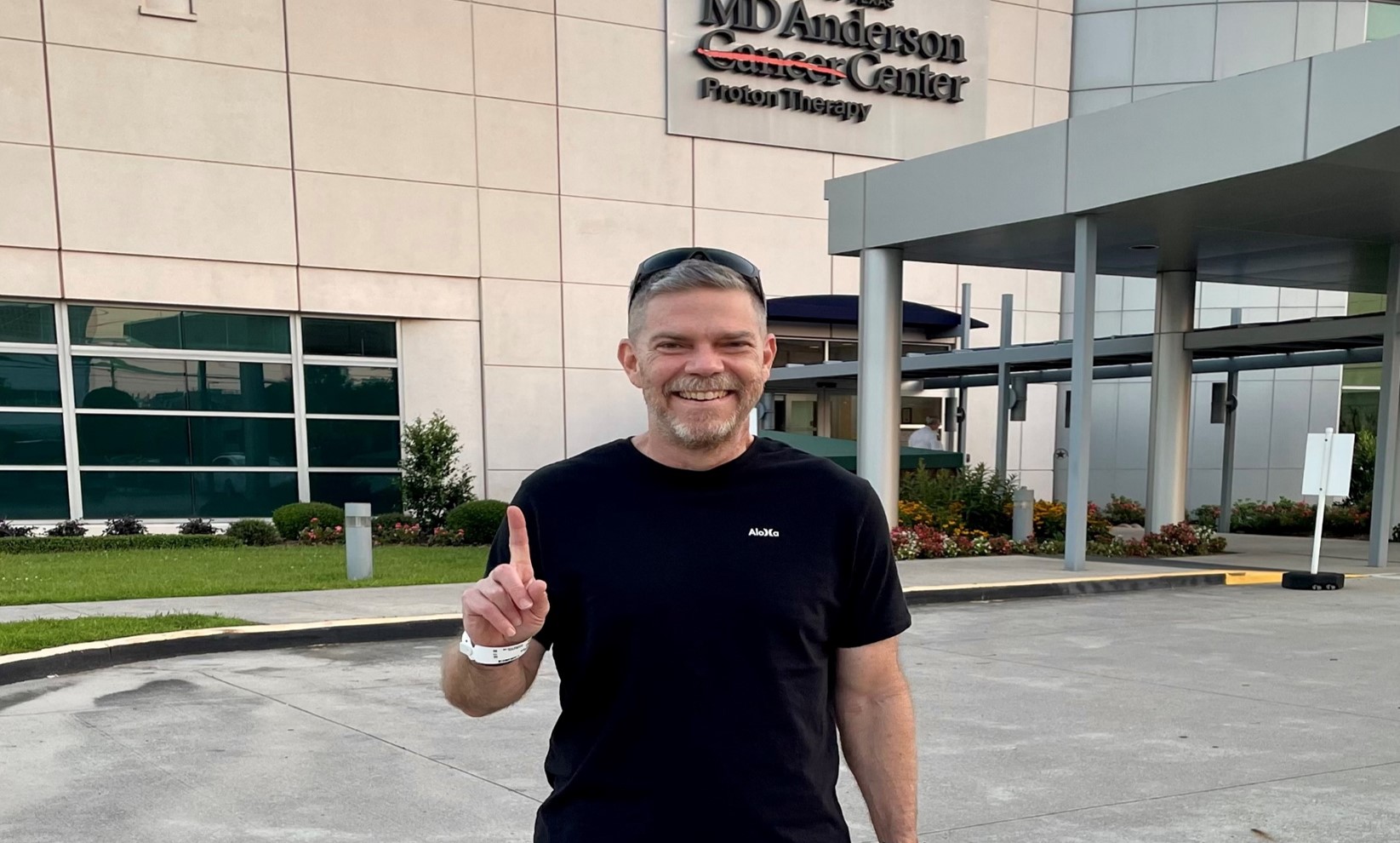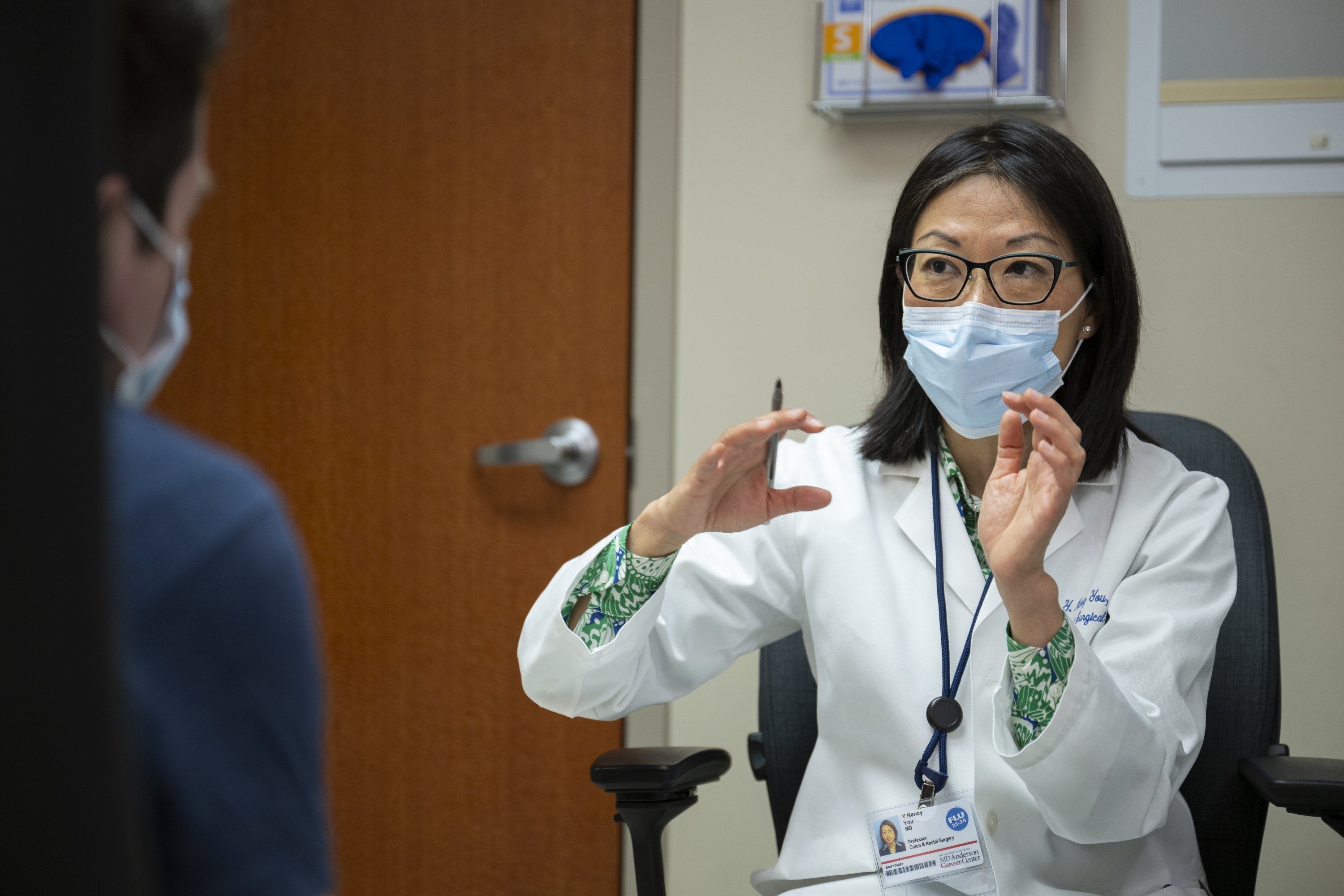- Diseases
- Acoustic Neuroma (14)
- Adrenal Gland Tumor (24)
- Anal Cancer (68)
- Anemia (2)
- Appendix Cancer (16)
- Bile Duct Cancer (26)
- Bladder Cancer (72)
- Brain Metastases (28)
- Brain Tumor (232)
- Breast Cancer (714)
- Breast Implant-Associated Anaplastic Large Cell Lymphoma (2)
- Cancer of Unknown Primary (4)
- Carcinoid Tumor (8)
- Cervical Cancer (158)
- Colon Cancer (166)
- Colorectal Cancer (118)
- Endocrine Tumor (4)
- Esophageal Cancer (44)
- Eye Cancer (36)
- Fallopian Tube Cancer (8)
- Germ Cell Tumor (4)
- Gestational Trophoblastic Disease (2)
- Head and Neck Cancer (12)
- Kidney Cancer (128)
- Leukemia (342)
- Liver Cancer (50)
- Lung Cancer (286)
- Lymphoma (278)
- Mesothelioma (14)
- Metastasis (30)
- Multiple Myeloma (100)
- Myelodysplastic Syndrome (60)
- Myeloproliferative Neoplasm (6)
- Neuroendocrine Tumors (16)
- Oral Cancer (100)
- Ovarian Cancer (172)
- Pancreatic Cancer (160)
- Parathyroid Disease (2)
- Penile Cancer (14)
- Pituitary Tumor (6)
- Prostate Cancer (146)
- Rectal Cancer (58)
- Renal Medullary Carcinoma (6)
- Salivary Gland Cancer (14)
- Sarcoma (238)
- Skin Cancer (296)
- Skull Base Tumors (56)
- Spinal Tumor (12)
- Stomach Cancer (64)
- Testicular Cancer (28)
- Throat Cancer (92)
- Thymoma (6)
- Thyroid Cancer (98)
- Tonsil Cancer (30)
- Uterine Cancer (80)
- Vaginal Cancer (16)
- Vulvar Cancer (20)
- Cancer Topic
- Adolescent and Young Adult Cancer Issues (20)
- Advance Care Planning (10)
- Biostatistics (2)
- Blood Donation (18)
- Bone Health (8)
- COVID-19 (362)
- Cancer Recurrence (120)
- Childhood Cancer Issues (120)
- Clinical Trials (632)
- Complementary Integrative Medicine (22)
- Cytogenetics (2)
- DNA Methylation (4)
- Diagnosis (232)
- Epigenetics (6)
- Fertility (62)
- Follow-up Guidelines (2)
- Health Disparities (14)
- Hereditary Cancer Syndromes (126)
- Immunology (18)
- Li-Fraumeni Syndrome (8)
- Mental Health (116)
- Molecular Diagnostics (8)
- Pain Management (62)
- Palliative Care (8)
- Pathology (10)
- Physical Therapy (18)
- Pregnancy (18)
- Prevention (918)
- Research (392)
- Second Opinion (74)
- Sexuality (16)
- Side Effects (604)
- Sleep Disorders (10)
- Stem Cell Transplantation Cellular Therapy (216)
- Support (402)
- Survivorship (322)
- Symptoms (182)
- Treatment (1786)
Starting exercise prior to cancer treatment can pay off
4 minute read | Published June 27, 2018
Medically Reviewed | Last reviewed by an MD Anderson Cancer Center medical professional on June 27, 2018
Cancer can have a lasting effect on a patient.
That’s why rehabilitation is often so important after cancer treatment or surgery.
But how would a patient fare if physical therapy (PT) and occupational therapy (OT) came before any cancer care? That’s a question a multidisciplinary team at MD Anderson continues to explore through prehabilitation, or prehab.
Prehab is used to help improve the strength, endurance and functional capacity of patients following the initial diagnosis. It can be personalized to meet a patient’s individual needs and, much like MD Anderson’s enhanced recovery efforts, some preliminary research on prehab has documented improved results for patients.
Prehabilitation was first implemented at MD Anderson as a research trial that included pancreatic cancer patients who were preparing for surgery.
Other clinicians expressed interest in this concept, and a clinical pathway for prehabilitation was started in 2015.
Select surgical patients were seen in the Supportive Care Center by the Physical Medicine and Rehabilitation physicians and PT. Since that time, prehab has continued to gain momentum in cancer care and is now being used in the care of a few of our stem cell transplant patients.
“Many cancer patients who come to us are weak and frail, even prior to chemotherapy or surgery. Our goal is to optimize their care by improving their strength and endurance beforehand,” says An Ngo-Huang, D.O., assistant professor of Palliative, Rehabilitation and Integrative Medicine. “We have the ability to focus on strengthening certain muscles to improve their functional deficits, manage issues that hinder their ability to exercise and also to help ease stress by preparing them mentally for what to expect throughout their cancer journey.”
Empowering patients to help themselves through cancer treatment
Virginia Swank can attest to the benefits of prehab. After undergoing complex surgery for an upper gastrointestinal cancer, Virginia had to receive food through a feeding tube, and it took her several months to recover following her surgery. Once Virginia finally began to heal and regain her strength, her care team recommended prehab exercises to help her prepare for her next surgery, which involved surgeons reconstructing her gastrointestinal system.
For months, Virginia followed a regimen of resistance band exercises, chair squats and walking to help strengthen her body. Now, more than a year after a successful reconstructive surgery, she is cancer-free and says she’s too motivated to ever stop exercising.
“The second surgery wasn’t such a strain on me because exercise really got me over the hump,” Virginia says. “I was up and back on my feet much quicker, so now I make sure to exercise 20 to 30 minutes each day.”
Rhodora Fontillas, a senior physical therapist who has worked with patients like Virginia in the prehab clinic since its inception, says patients definitely get a boost in confidence when they see that impairments can be lessened or even prevented through physical activity.
“We like to empower patients to take care of themselves,” Fontillas says. “I always use the analogy that completing their prehab exercises is like making a deposit into a savings account. When they’re actually recovering from chemotherapy, surgery or stem cell transplants, they’ll have something to draw from to help replenish their strength.”
Ngo-Huang notes that improved mobility is a key benefit for patients who do prehab exercises.
“We’ve found that most patients are up and walking quicker after surgery,” she says. “And because they’re stronger during surgery and able to recover faster, they may be candidates to receive further cancer treatment sooner.”
In addition, the improved strength and balance of prehab patients may decrease their risk for falls during hospitalization.
A collaborative approach to patient care
Physicians, nurses, PT practitioners and OT practitioners, pharmacists, clinical dieticians and other health care professionals all are involved in collaborating to enhance prehab efforts and help patients deal with potential stressors during their care.
For example, OT practitioners review patients’ daily activities and work on fatigue management, bathing, dressing and grooming.
“Many of our stem cell transplant patients are in the hospital for weeks, which can lead to depression,” says Brent Braveman, director of Rehabilitation Services. “We try to home in on the specific activities each patient values to help that patient continue to do these things. These pieces work in conjunction with what the rest of the team does.”
Staying engaged
Latoya Adekoya, an occupational therapist, also works with patients in the prehab process. She says patients benefit most when they can maintain their function and stay engaged in their daily activities.
“We educate patients on getting back into their roles and routines, and we encourage them to control the things they can because that’s a big part of the recovery process,” Adekoya says. “When I worked on the stem cell transplant unit, I recognized how patients were less engaged and had a reduced quality of life when their everyday norm was disrupted.”
More than 300 surgical and stem cell patients have participated in our prehab clinical program so far, but even more are expected as clinical outcomes are examined. It will be important to continue tracking outcomes, but the prehab team already reports that several patients who weren’t initially eligible for surgery have become candidates for surgery after only a couple months of strengthening with prehab.
“We’ve established a strong foundation, and patients are really appreciative of the program,” Fontillas says. “We’re thrilled that they can see the value in these activities and how exercise can improve their survivorship.”
A longer version of this story originally appeared in Messenger, MD Anderson’s quarterly publication for employees, volunteers, retirees and their families.
Request an appointment at MD Anderson online or by calling 1-855-595-7343.

We like to empower patients to take care of themselves.
Rhodora Fontillas
Senior Physical Therapist





